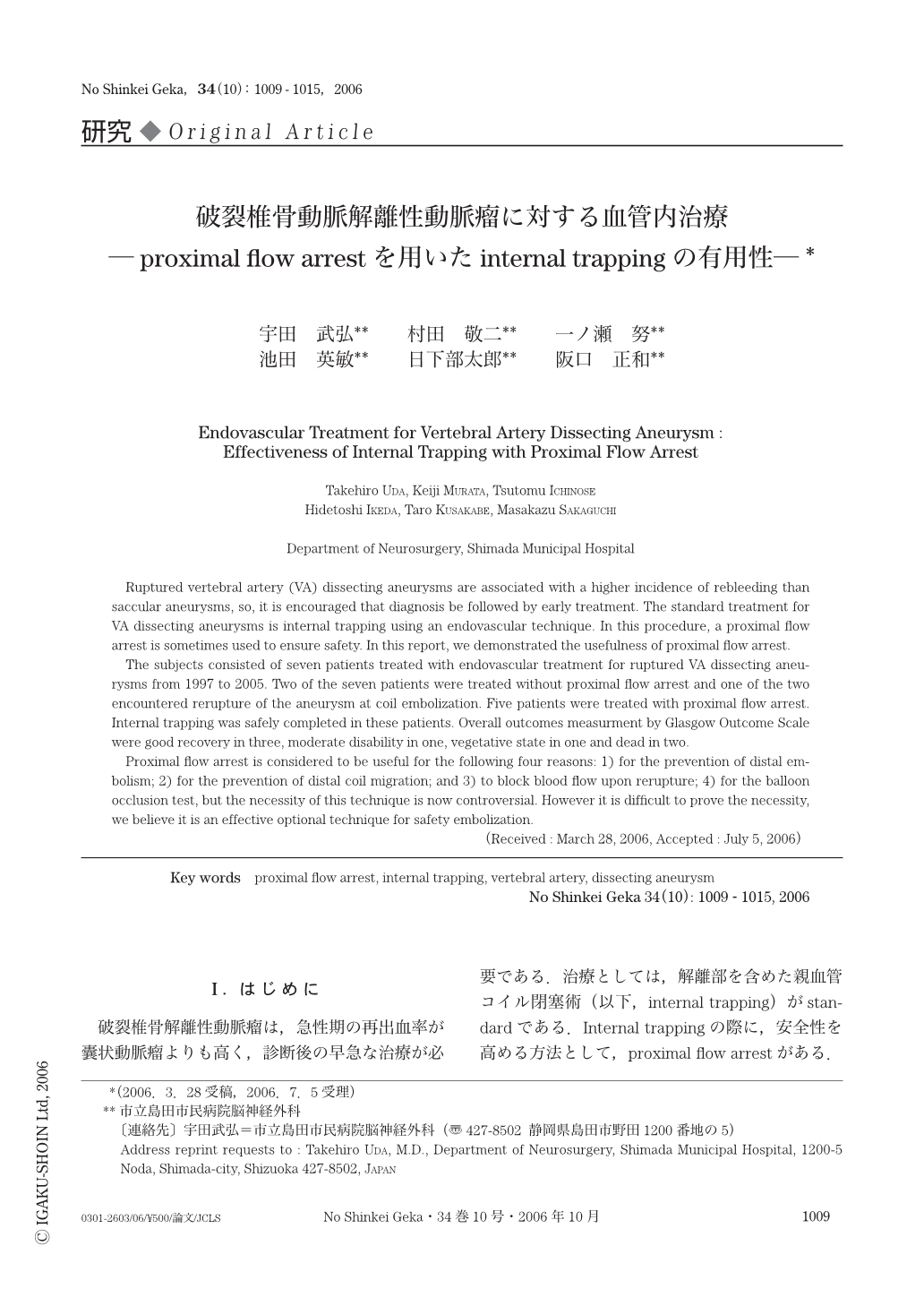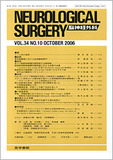Japanese
English
- 有料閲覧
- Abstract 文献概要
- 1ページ目 Look Inside
- 参考文献 Reference
Ⅰ.は じ め に
破裂椎骨解離性動脈瘤は,急性期の再出血率が囊状動脈瘤よりも高く,診断後の早急な治療が必要である.治療としては,解離部を含めた親血管コイル閉塞術(以下,internal trapping)がstandardである.Internal trappingの際に,安全性を高める方法として,proximal flow arrestがある.これは,バルーンつきのガイディングカテーテルを使い,患側椎骨動脈(VA)のflowを止めたうえでコイル塞栓を行うという手技である.現況では,proximal flow arrestの必要性は定まったものではないが,われわれの施設では,可能な限りproximal flow arrest を用いて手技に臨んでいる.VAの蛇行などにより,ガイディングカテーテルの留置が困難な例に対してもアプローチを工夫してproximal flow arrestを行っている.
Ruptured vertebral artery (VA) dissecting aneurysms are associated with a higher incidence of rebleeding than saccular aneurysms,so,it is encouraged that diagnosis be followed by early treatment. The standard treatment for VA dissecting aneurysms is internal trapping using an endovascular technique. In this procedure,a proximal flow arrest is sometimes used to ensure safety. In this report,we demonstrated the usefulness of proximal flow arrest.
The subjects consisted of seven patients treated with endovascular treatment for ruptured VA dissecting aneurysms from 1997 to 2005. Two of the seven patients were treated without proximal flow arrest and one of the two encountered rerupture of the aneurysm at coil embolization. Five patients were treated with proximal flow arrest. Internal trapping was safely completed in these patients. Overall outcomes measurment by Glasgow Outcome Scale were good recovery in three,moderate disability in one,vegetative state in one and dead in two.
Proximal flow arrest is considered to be useful for the following four reasons: 1) for the prevention of distal embolism; 2) for the prevention of distal coil migration; and 3) to block blood flow upon rerupture; 4) for the balloon occlusion test,but the necessity of this technique is now controversial. However it is difficult to prove the necessity,we believe it is an effective optional technique for safety embolization.

Copyright © 2006, Igaku-Shoin Ltd. All rights reserved.


